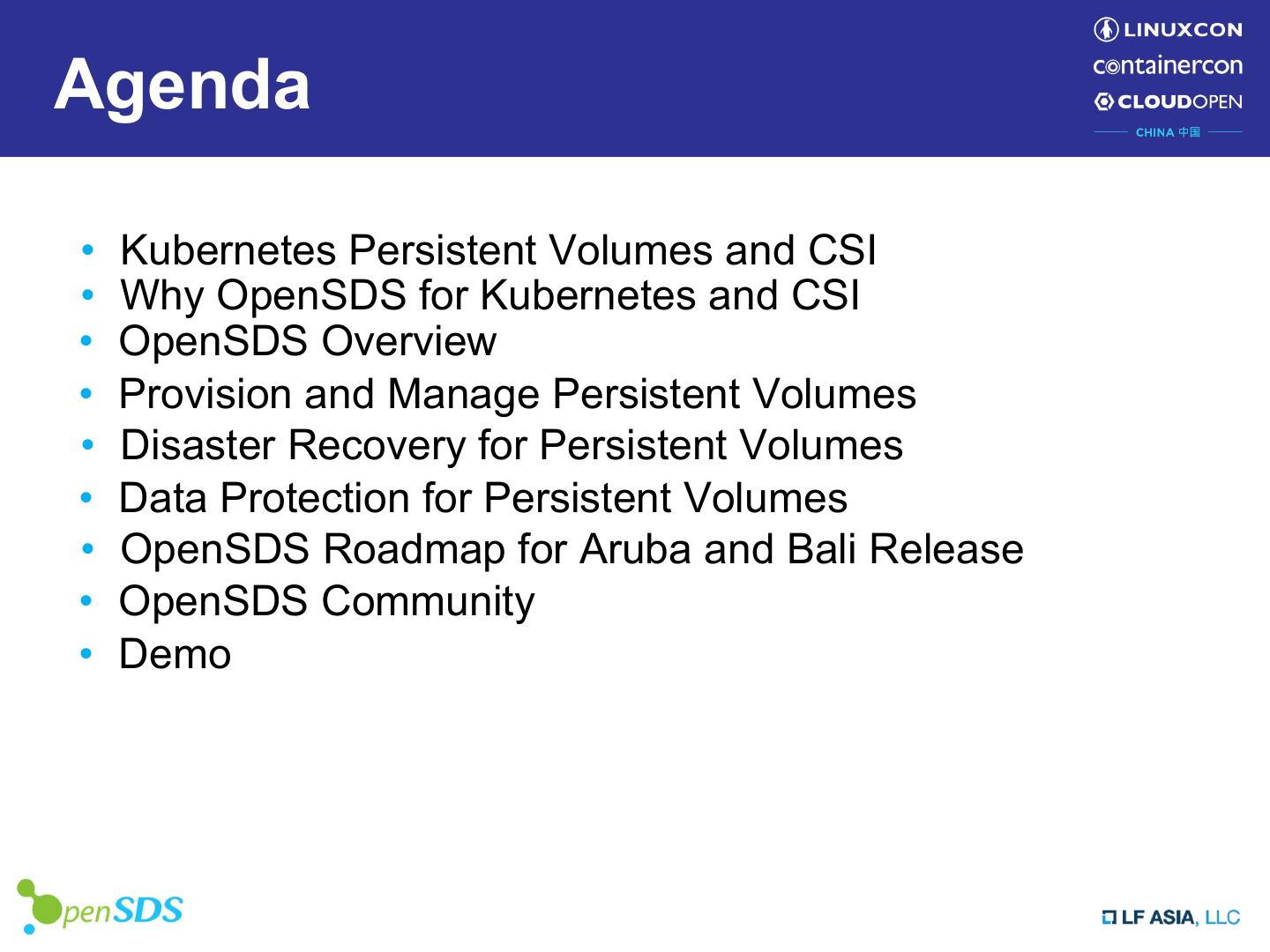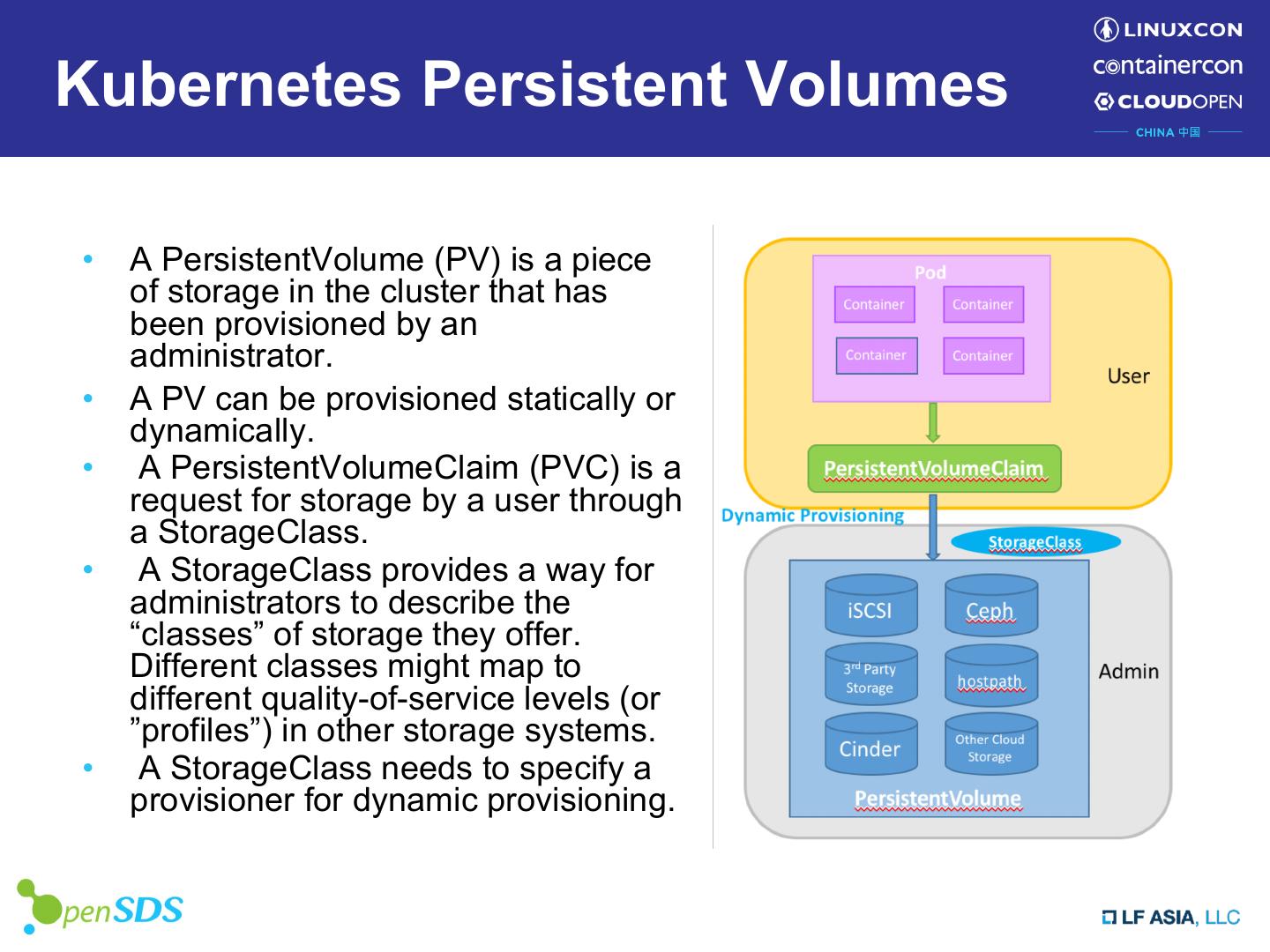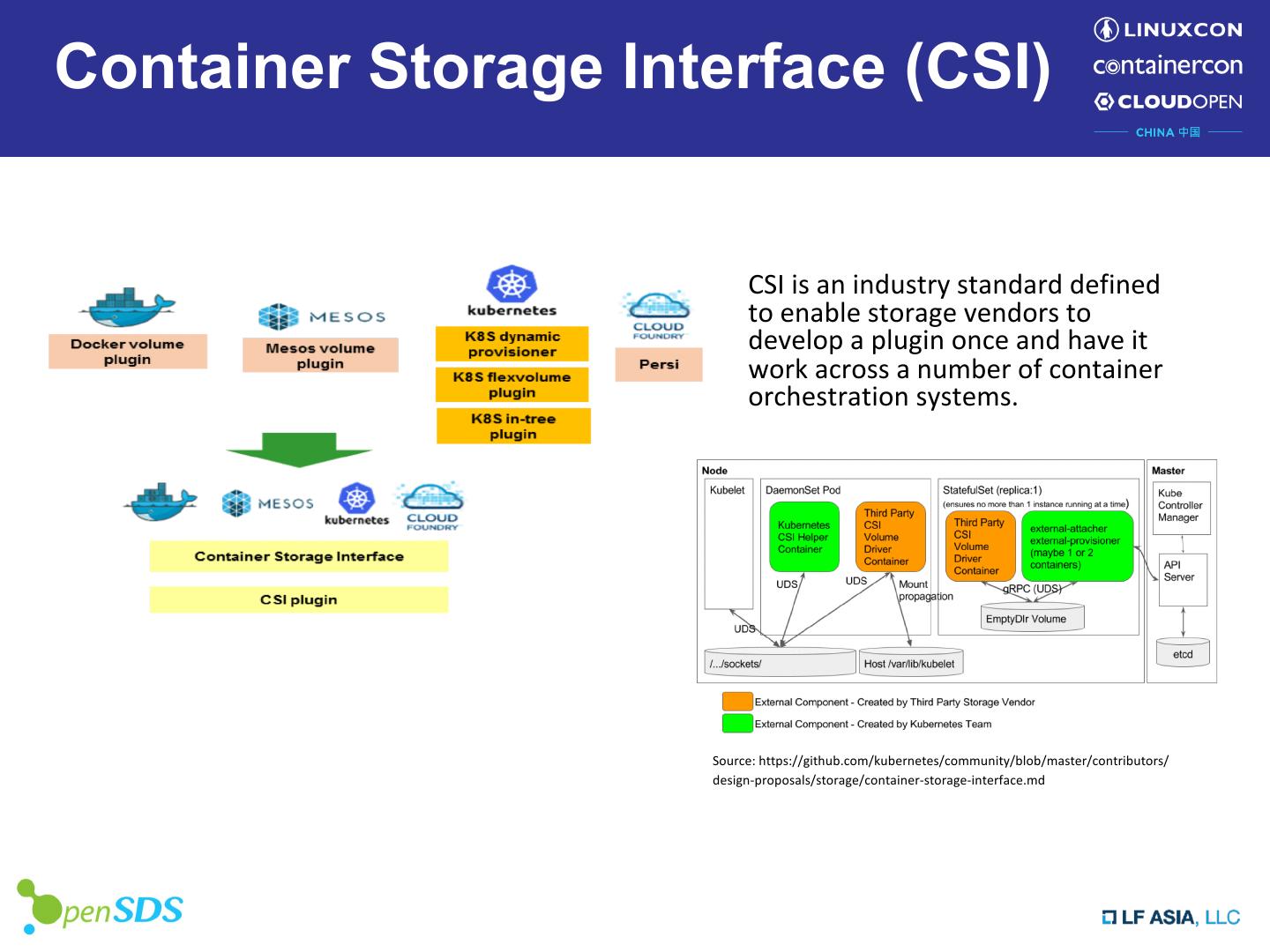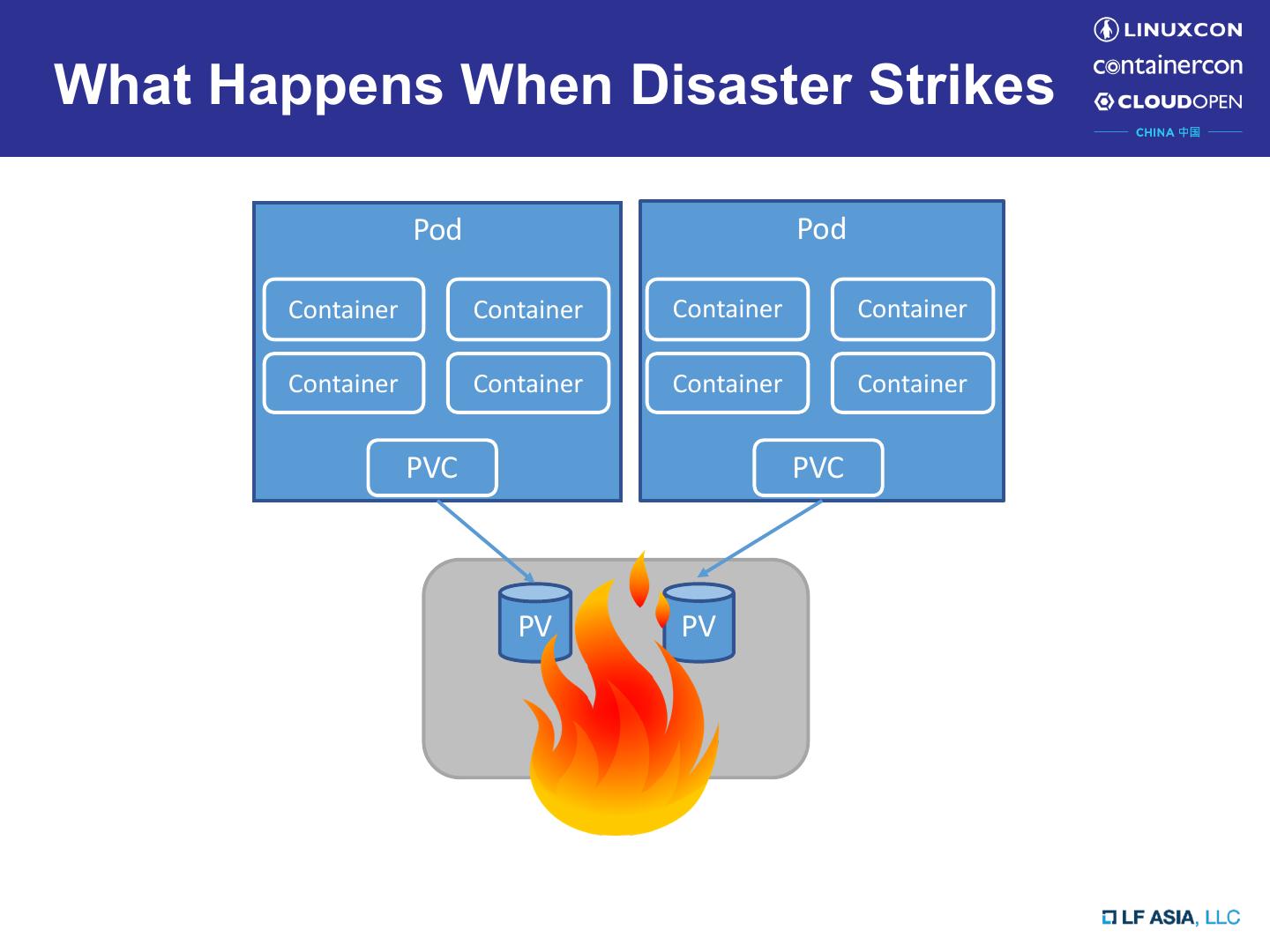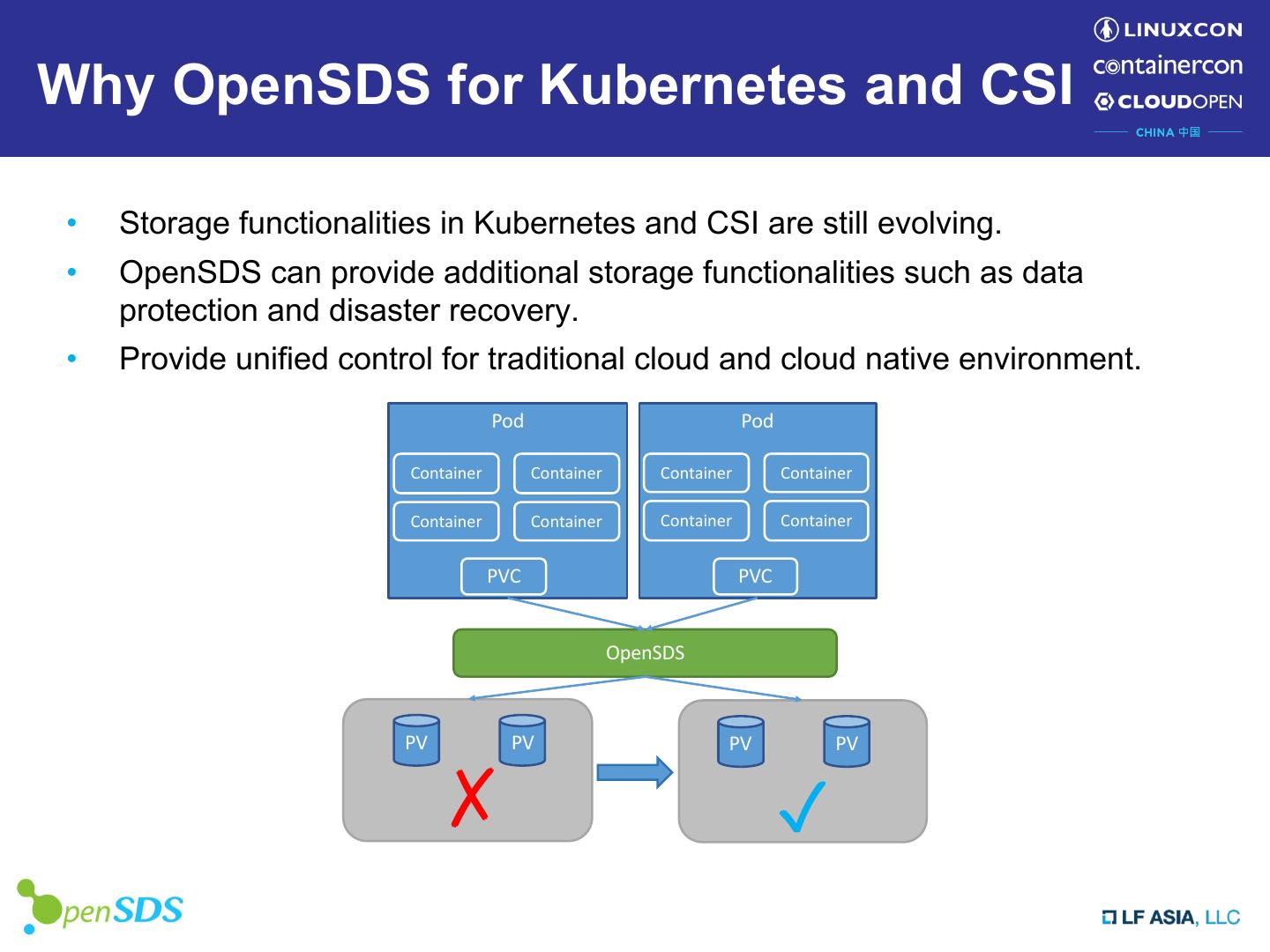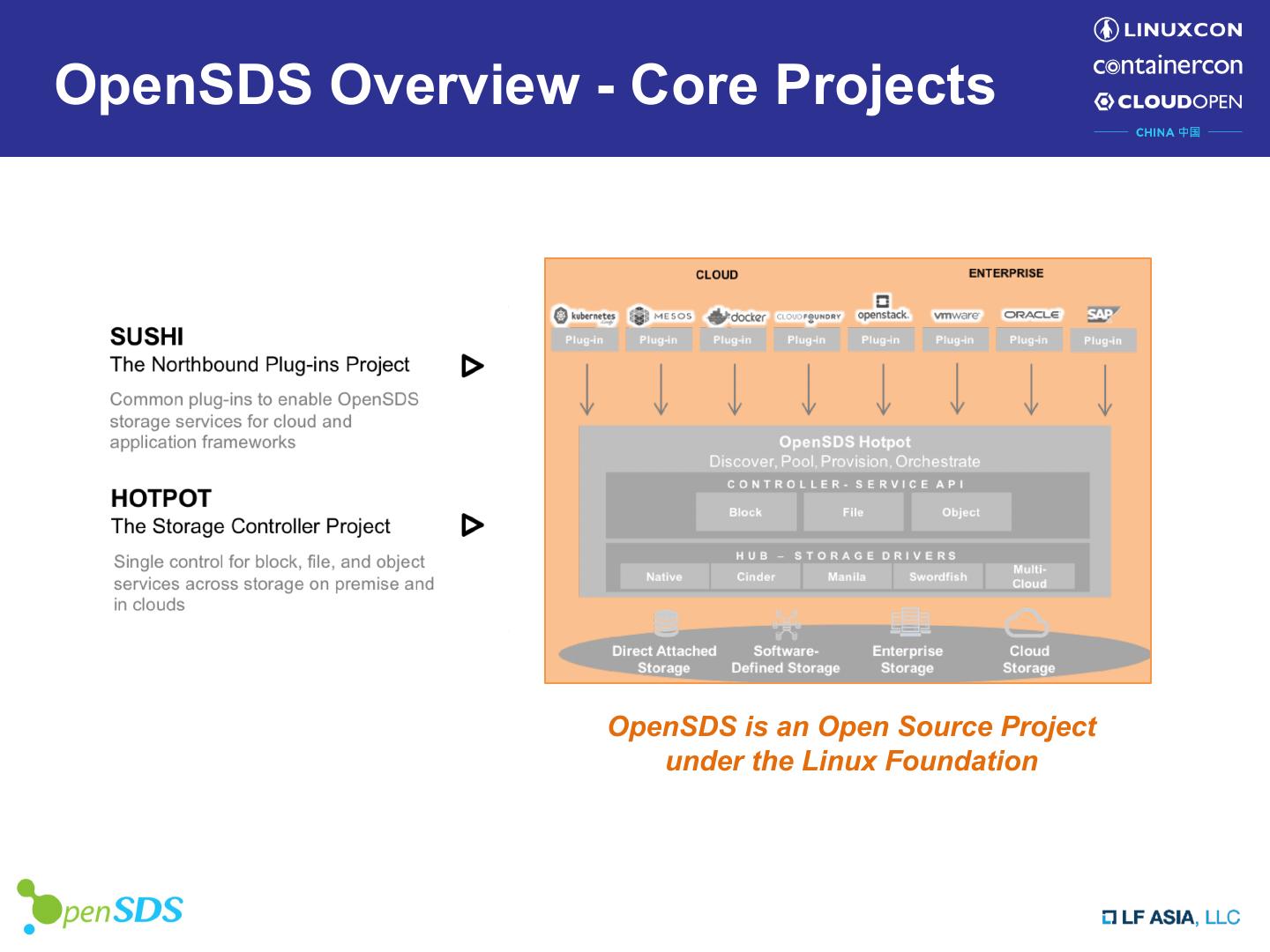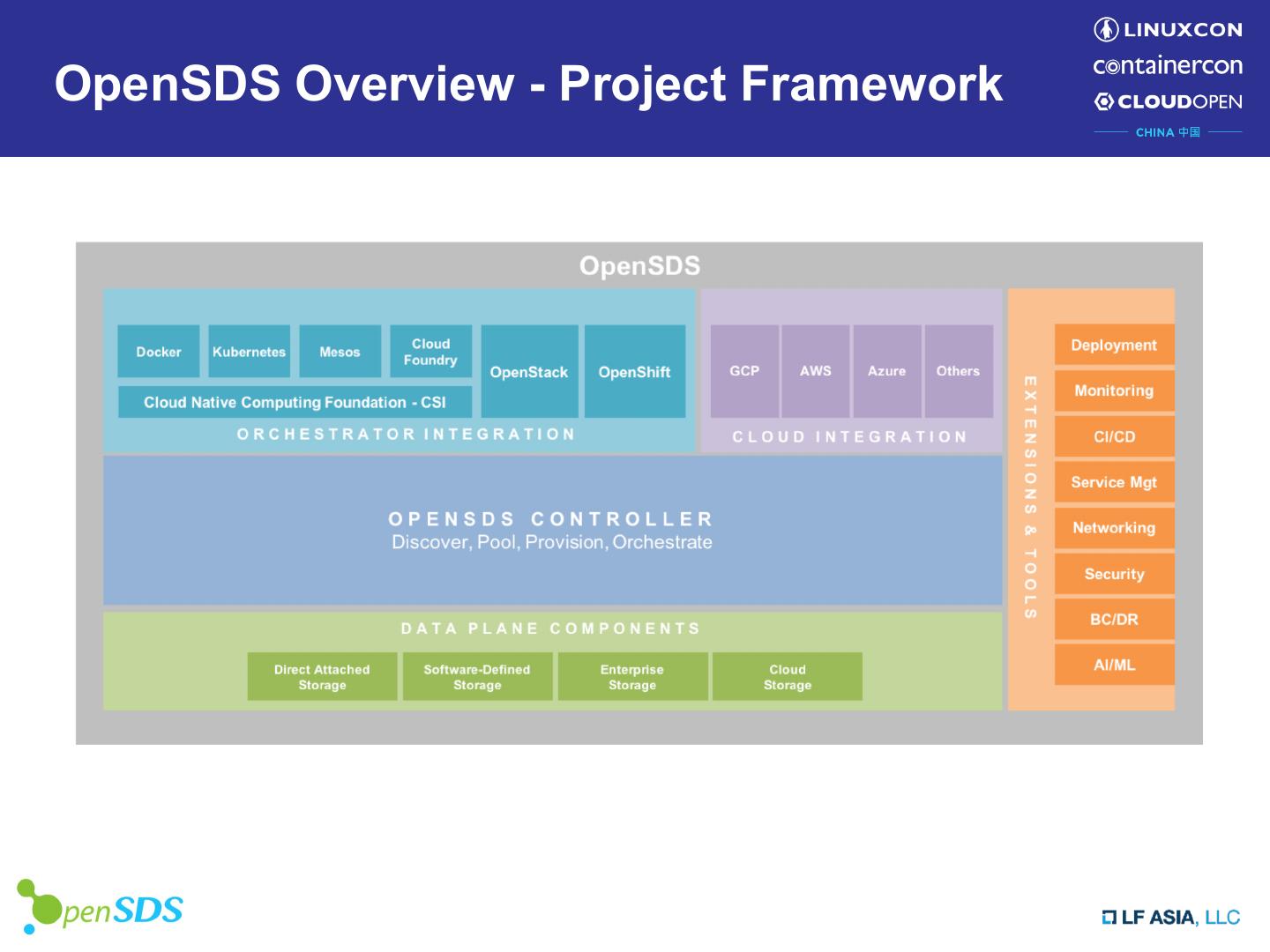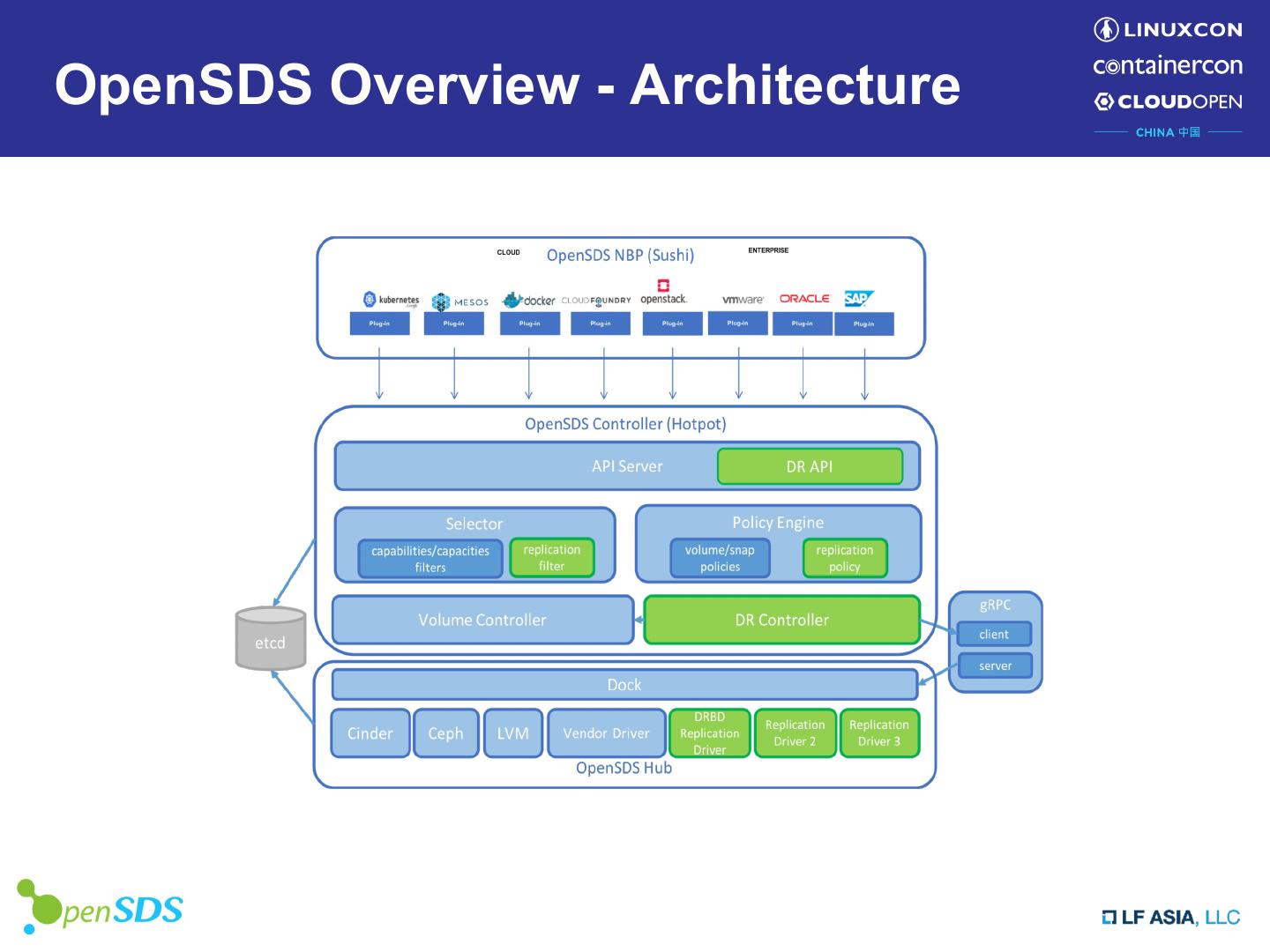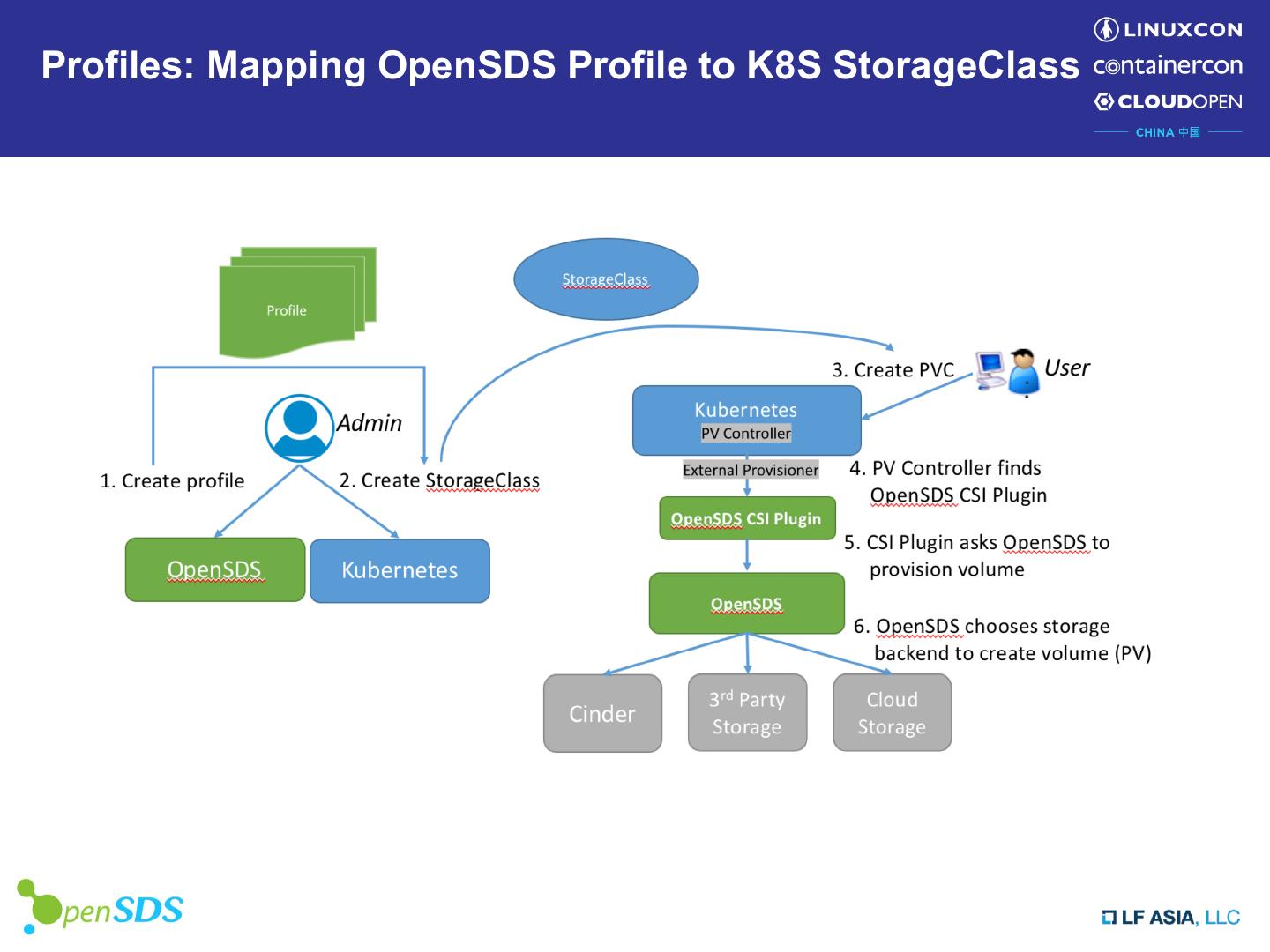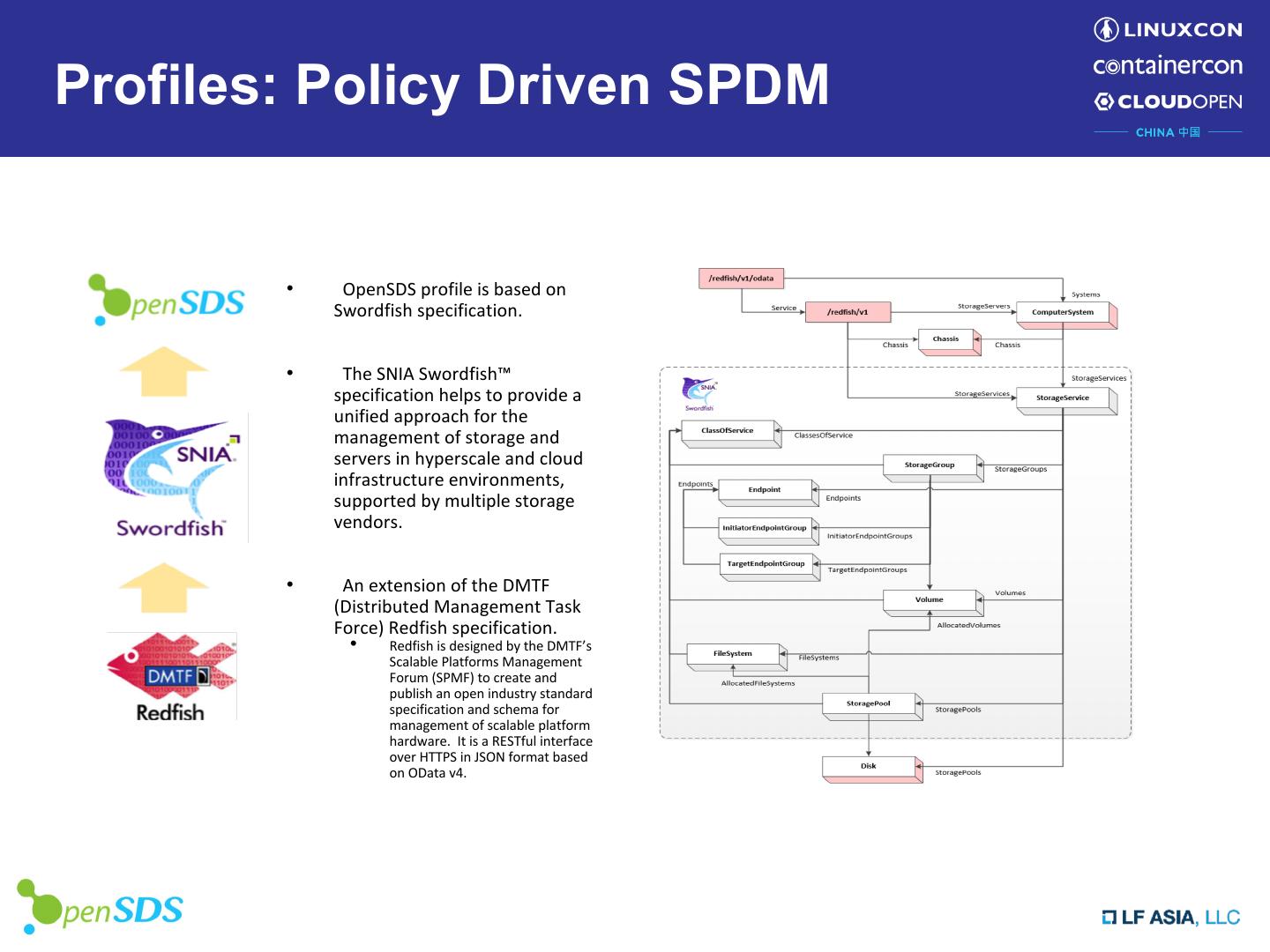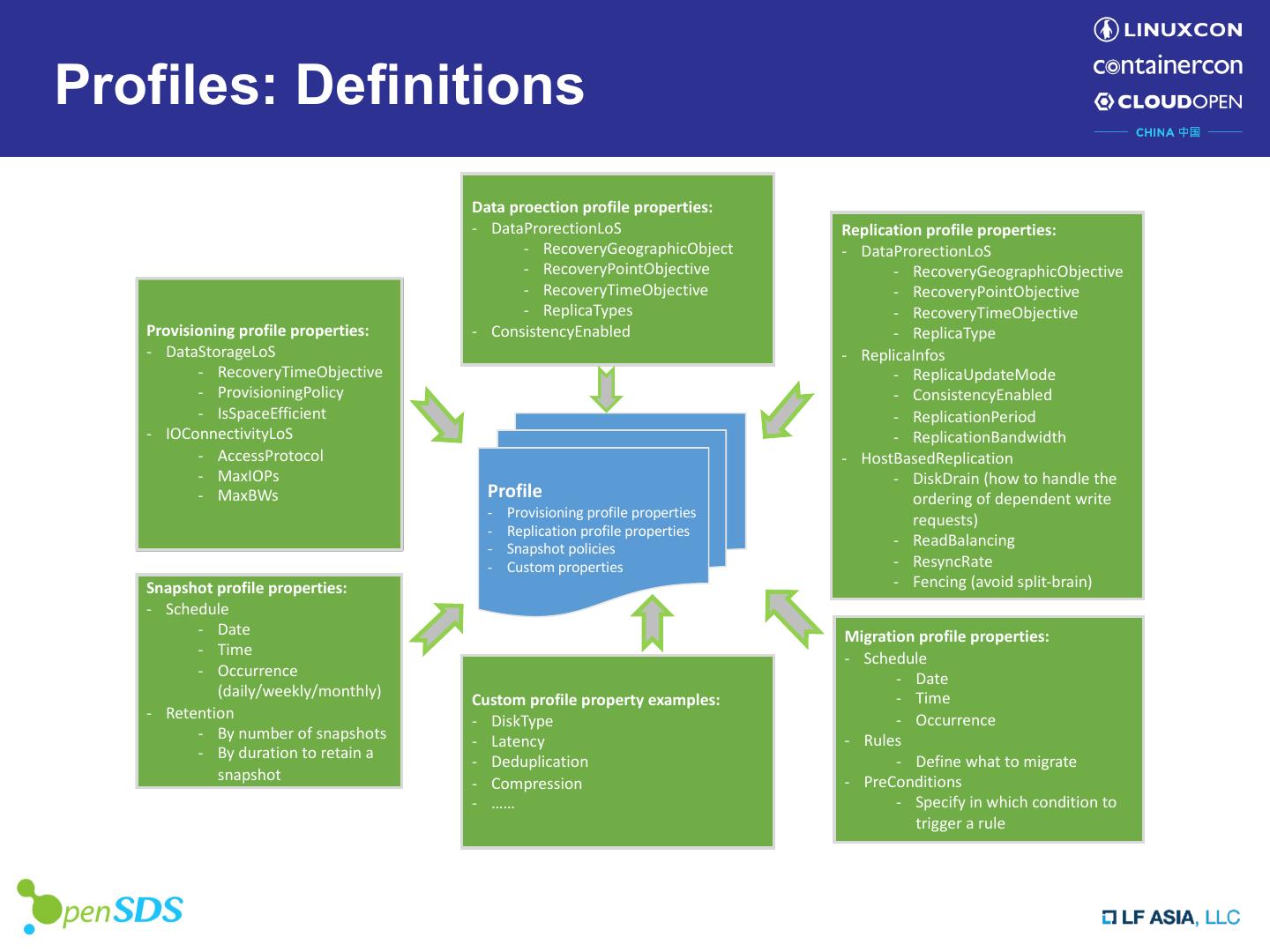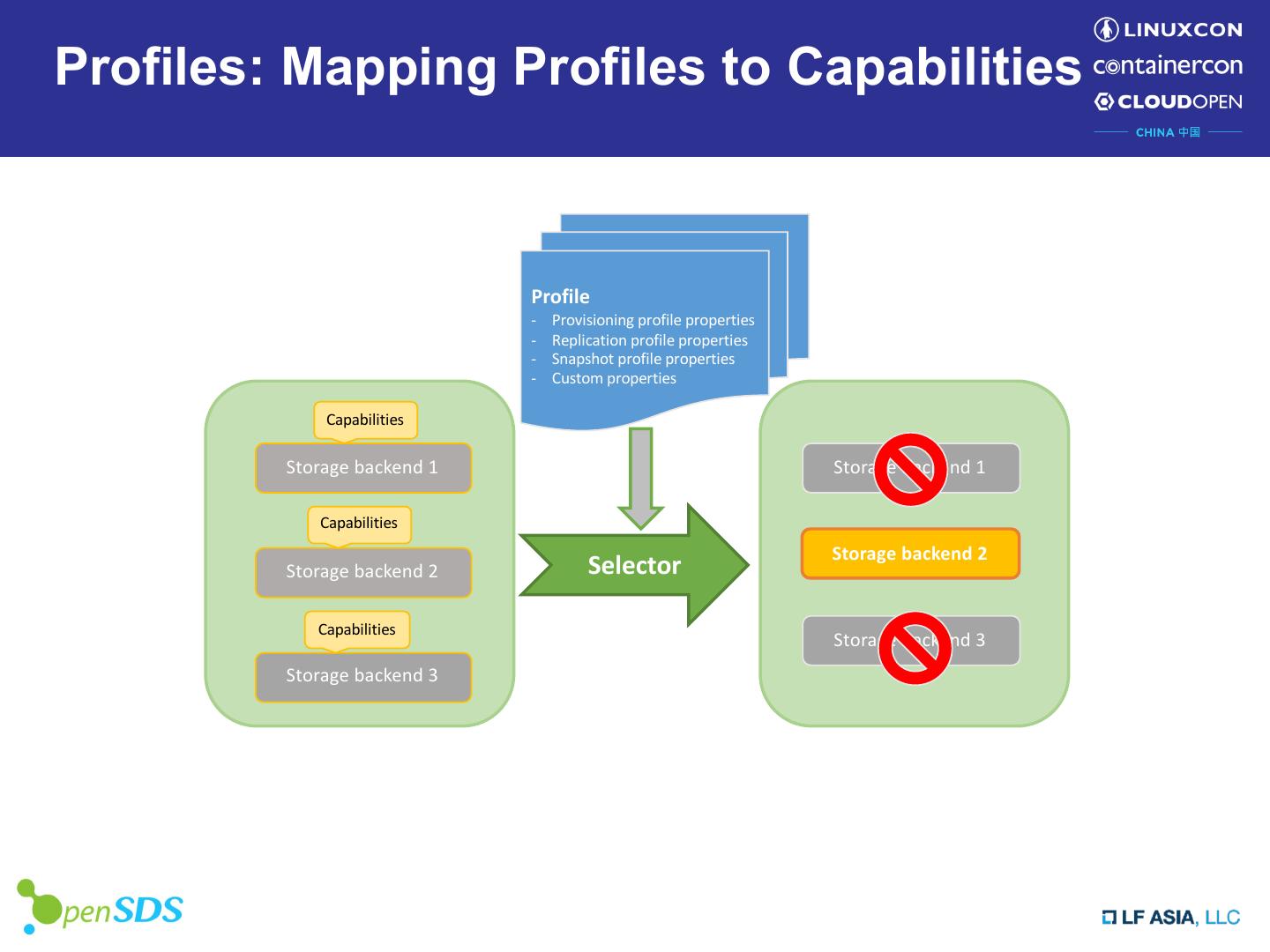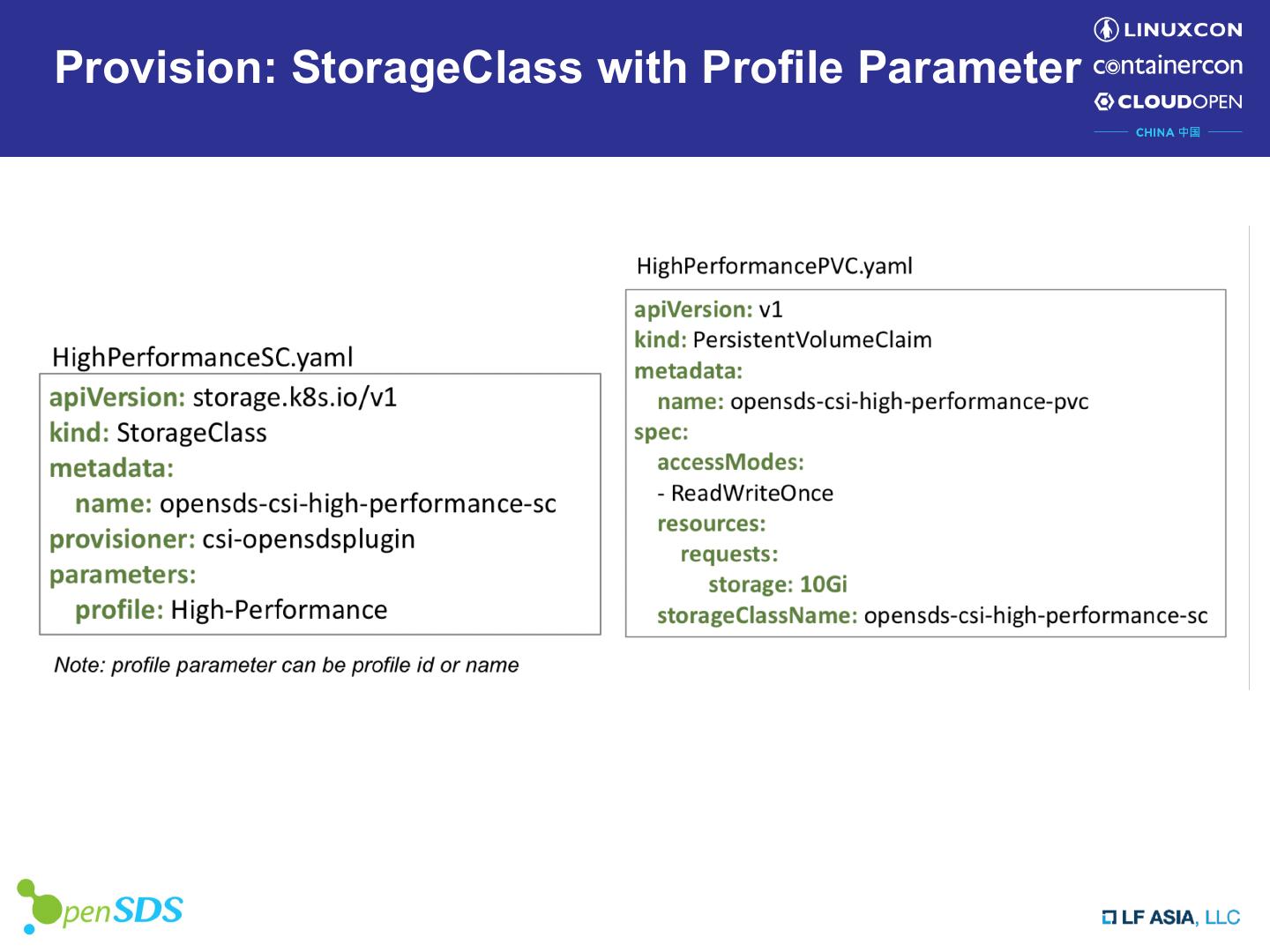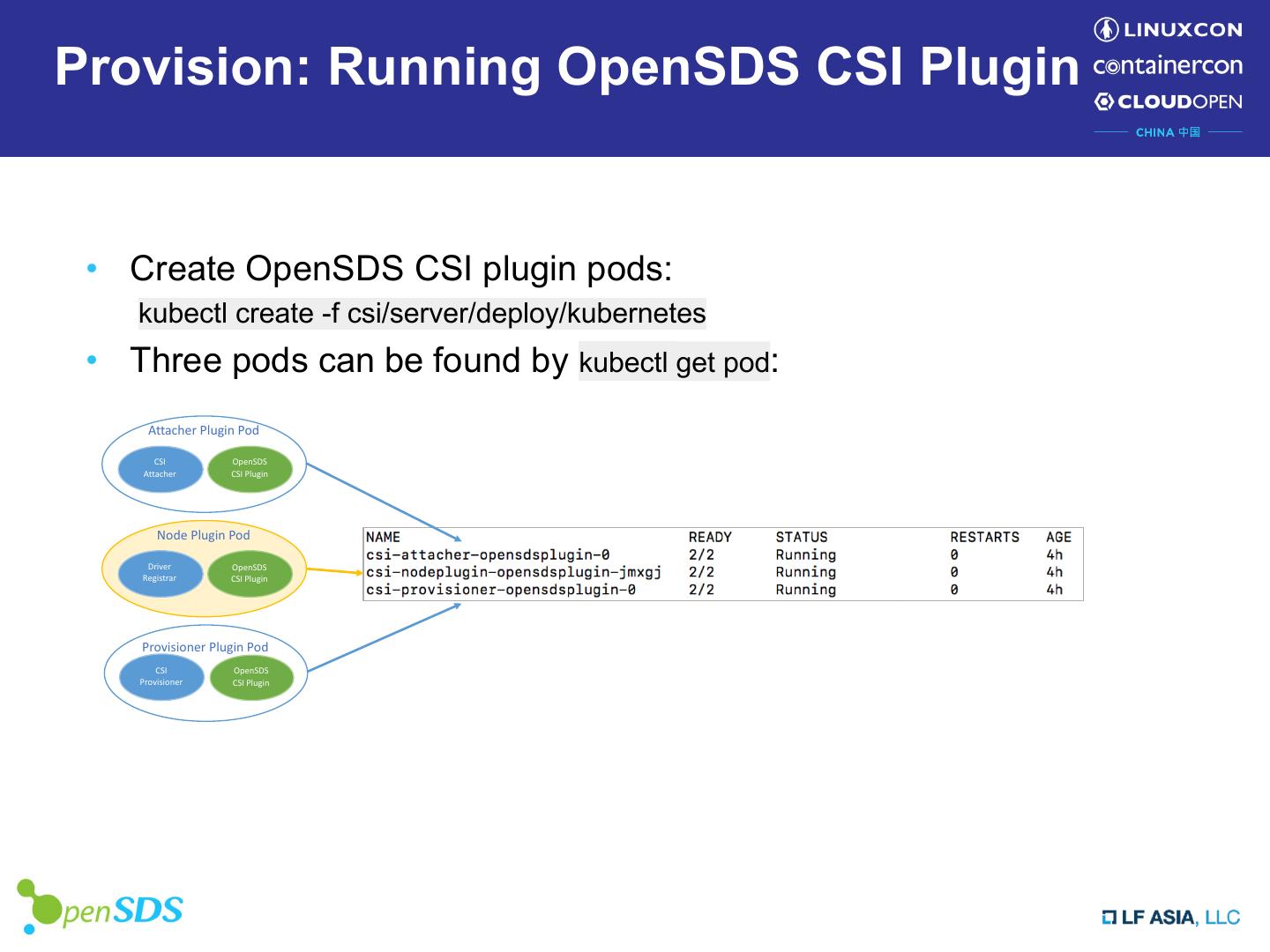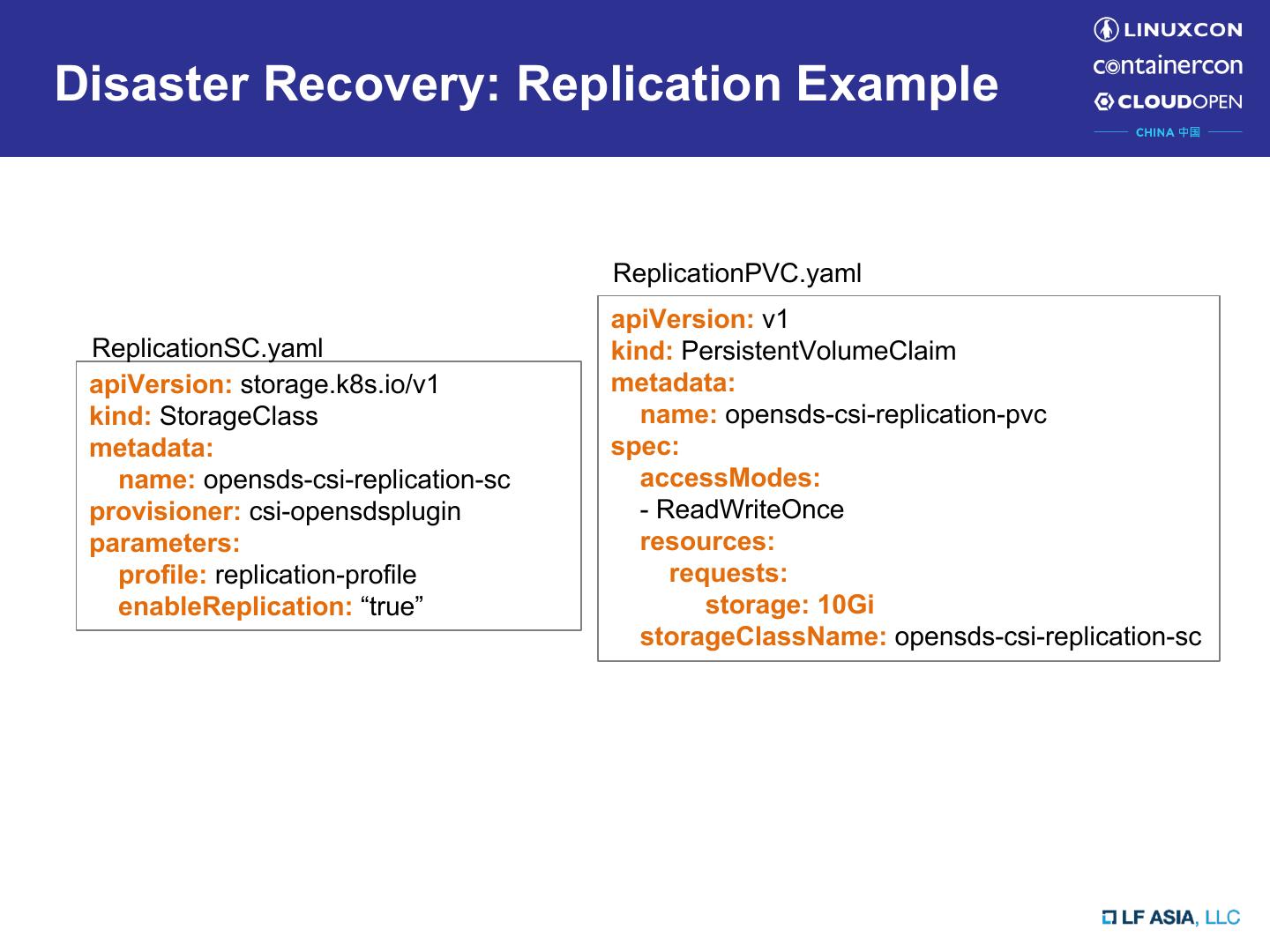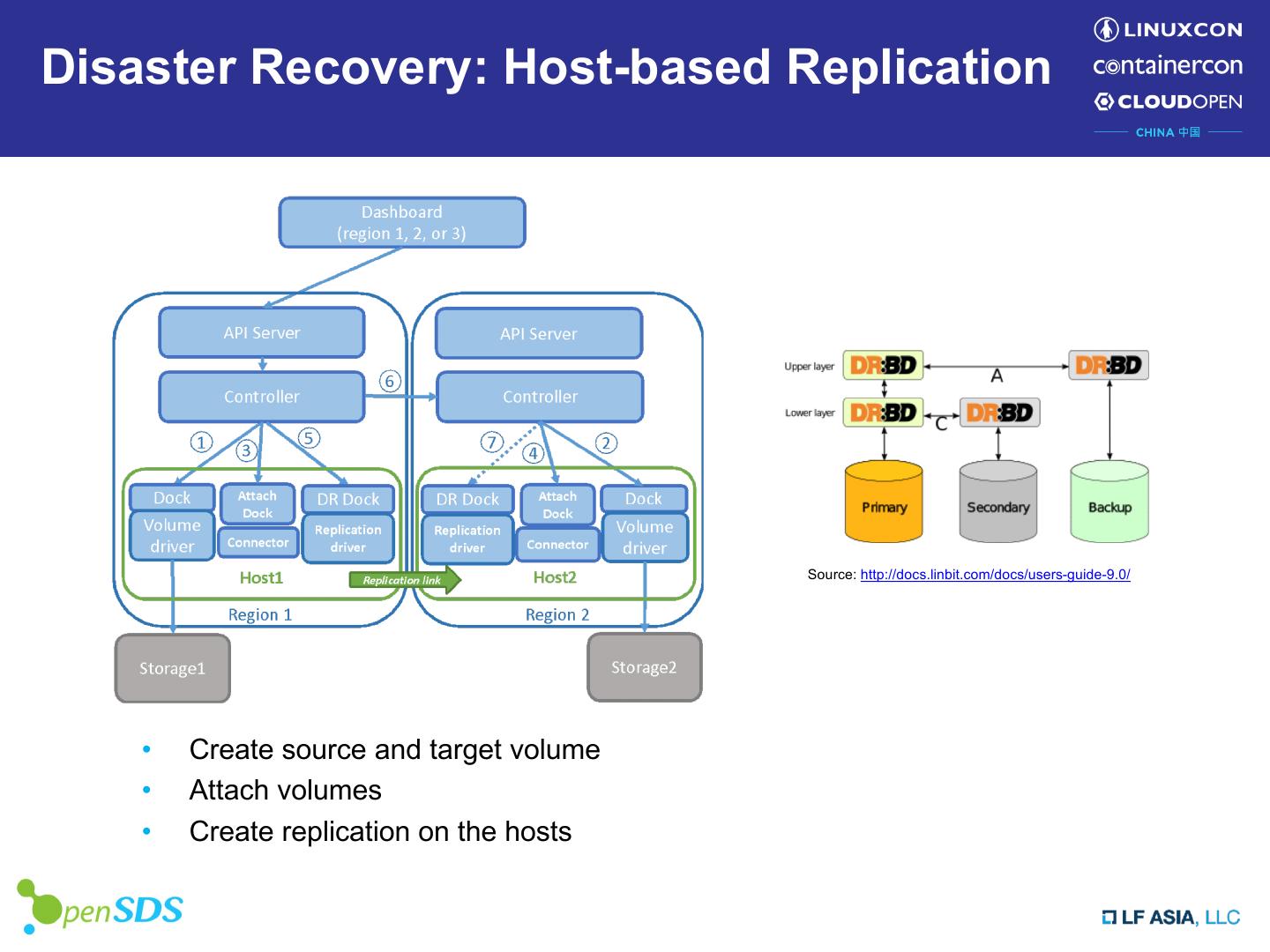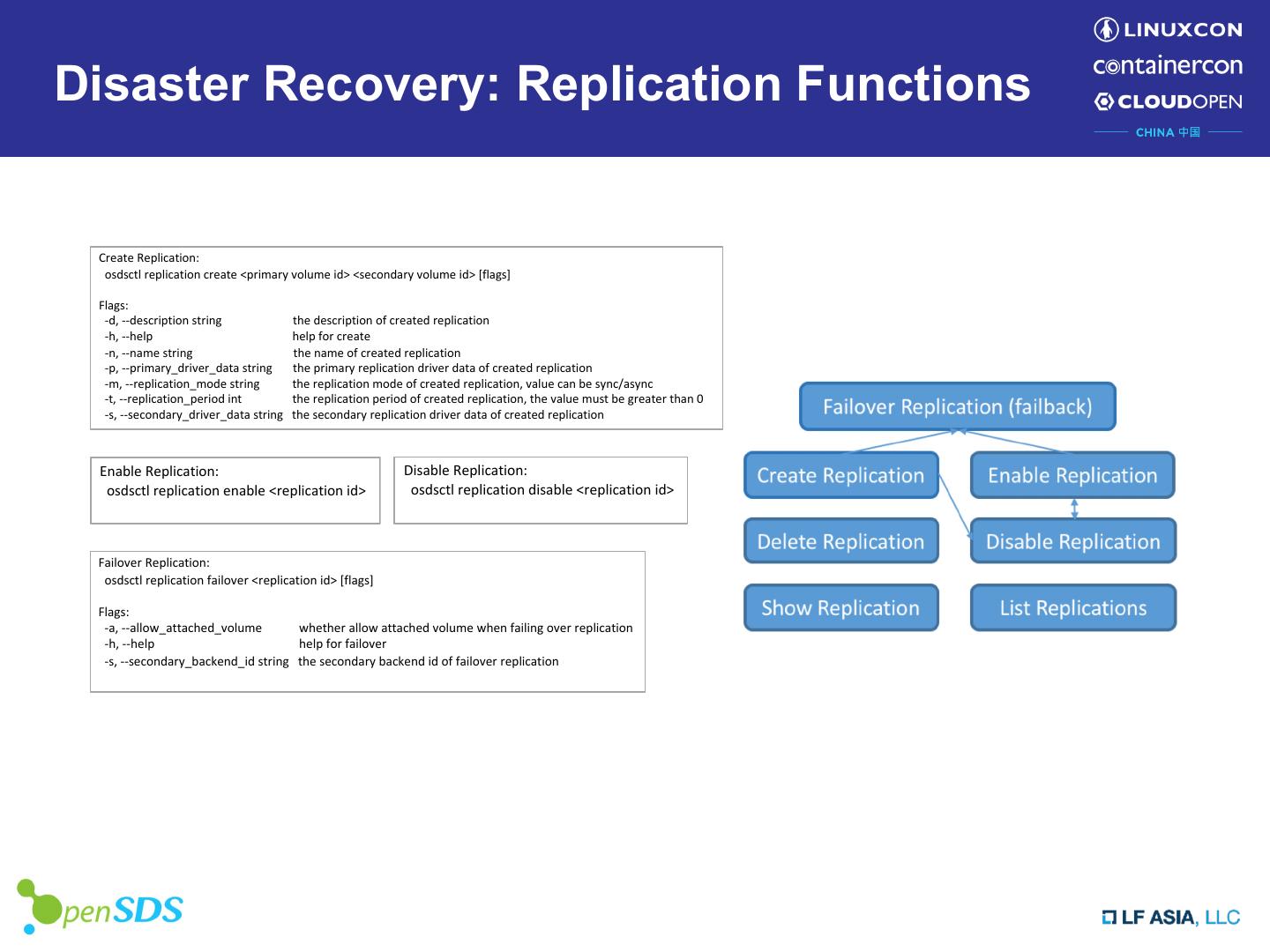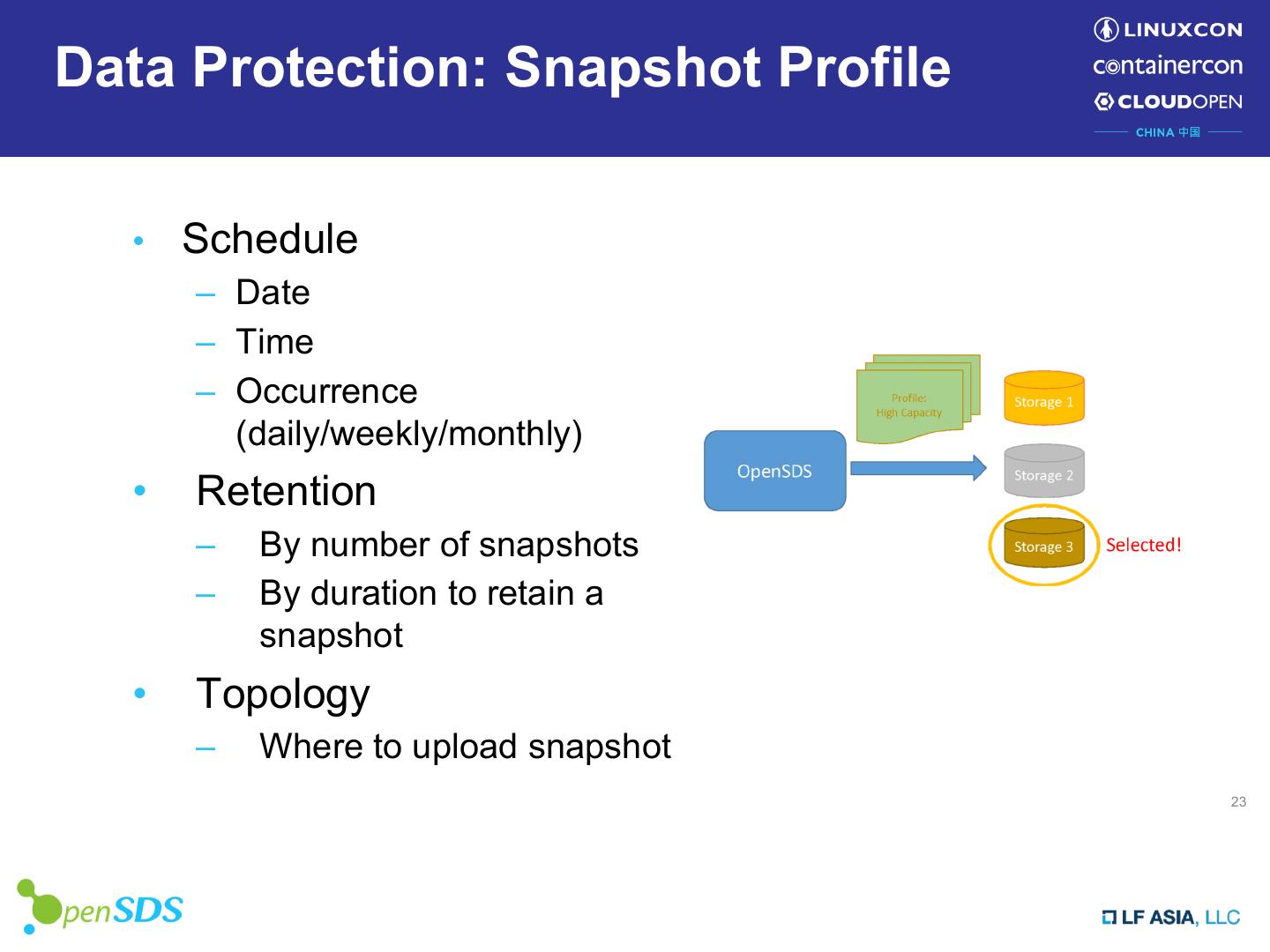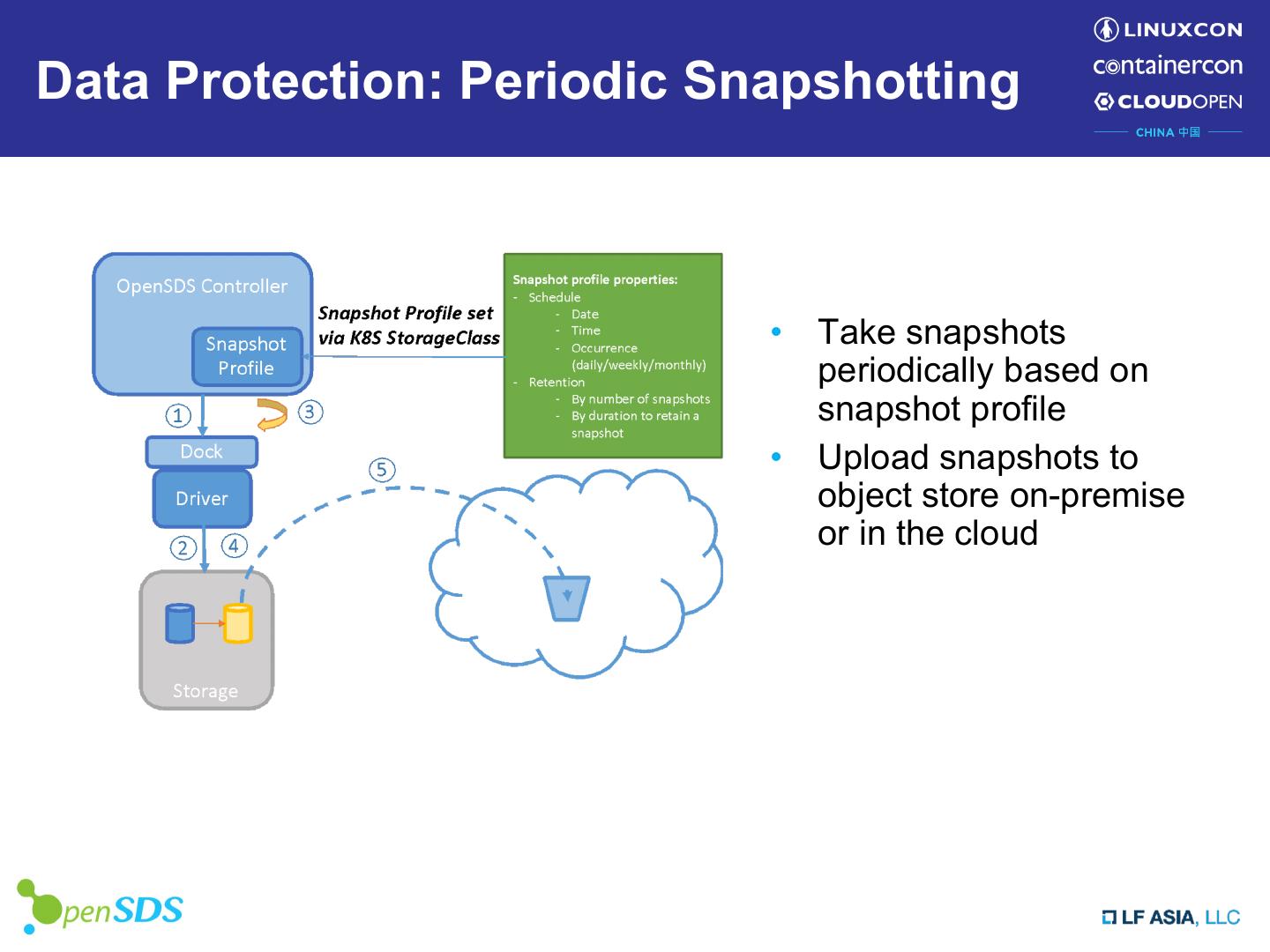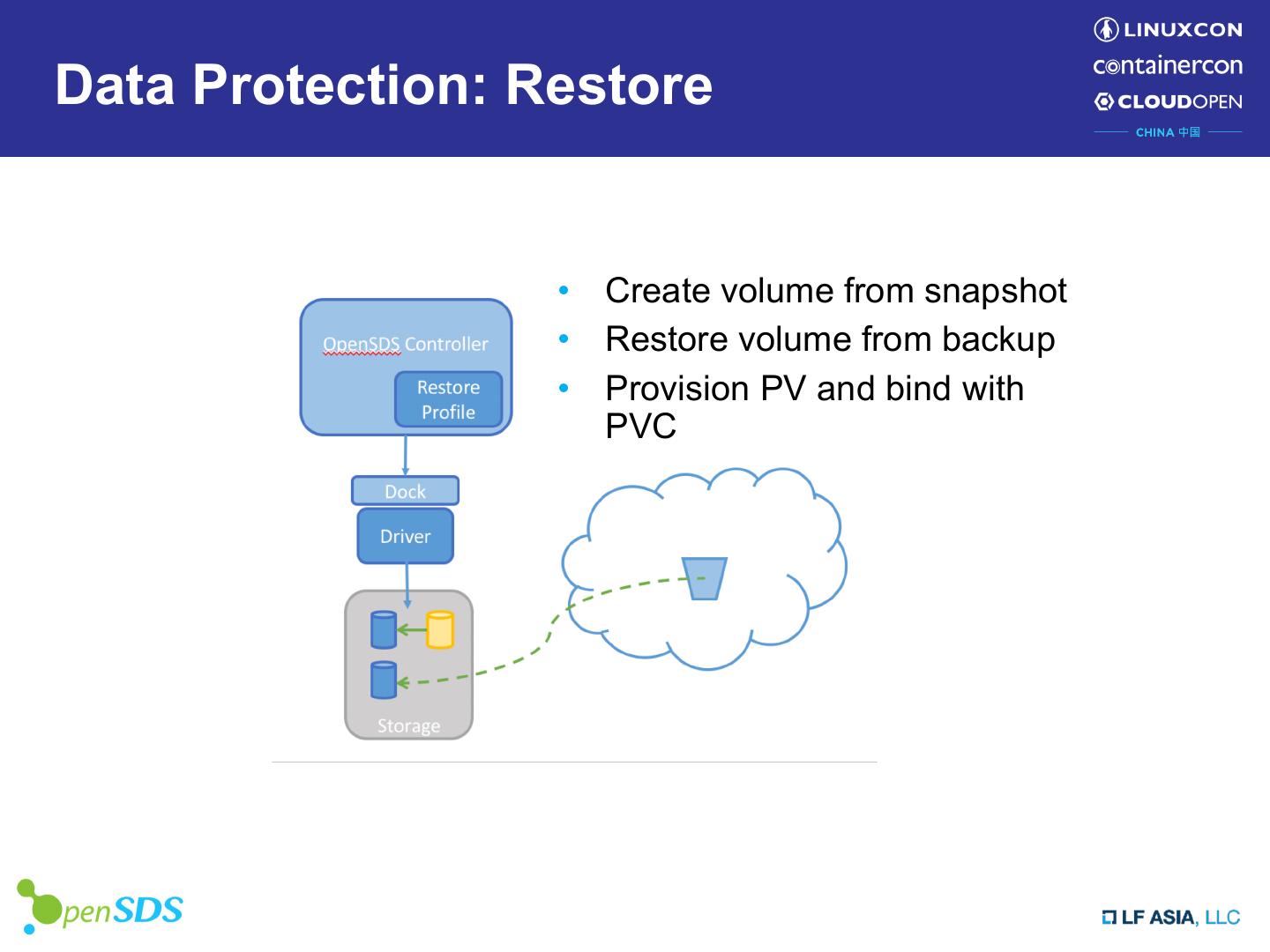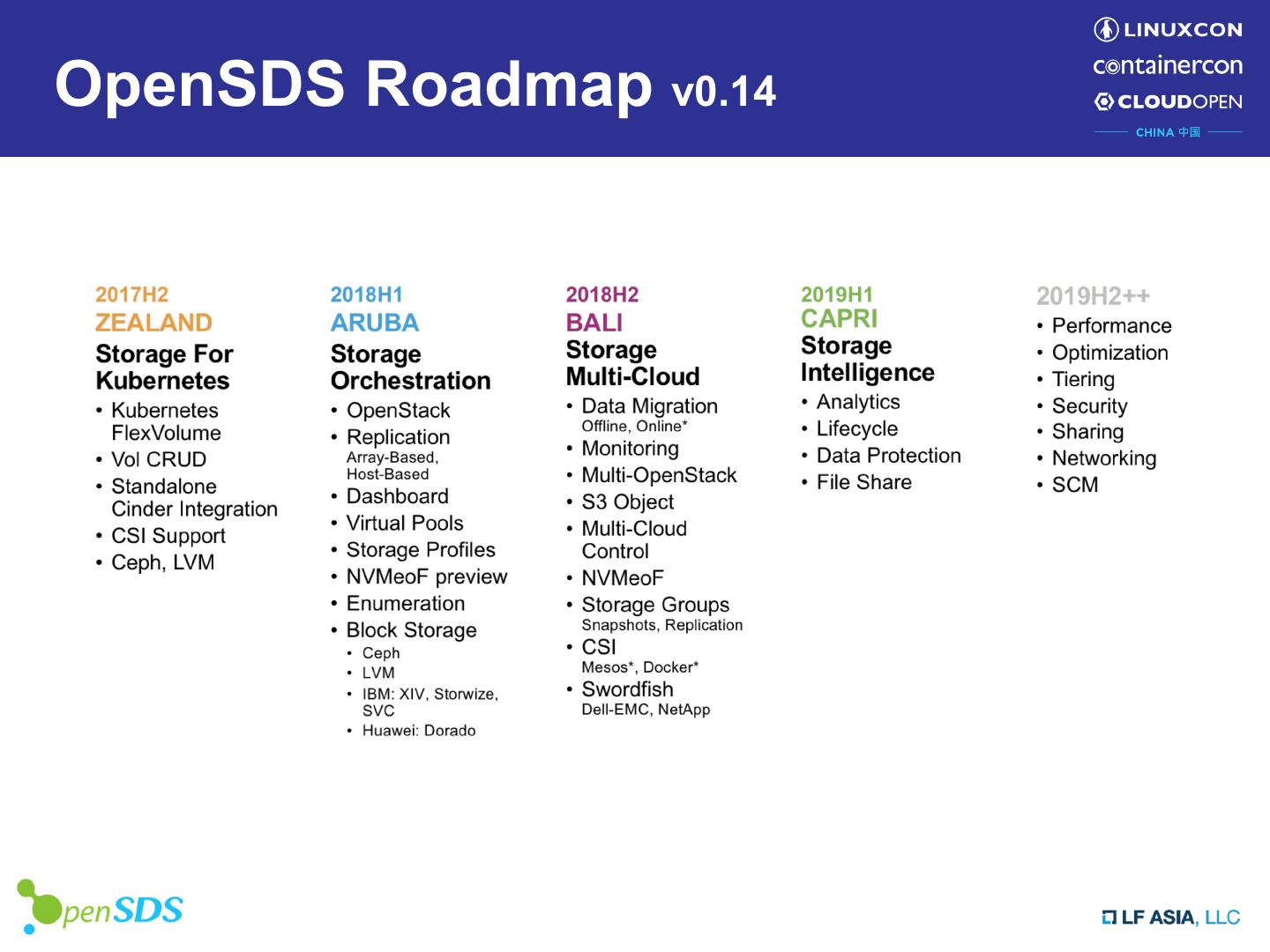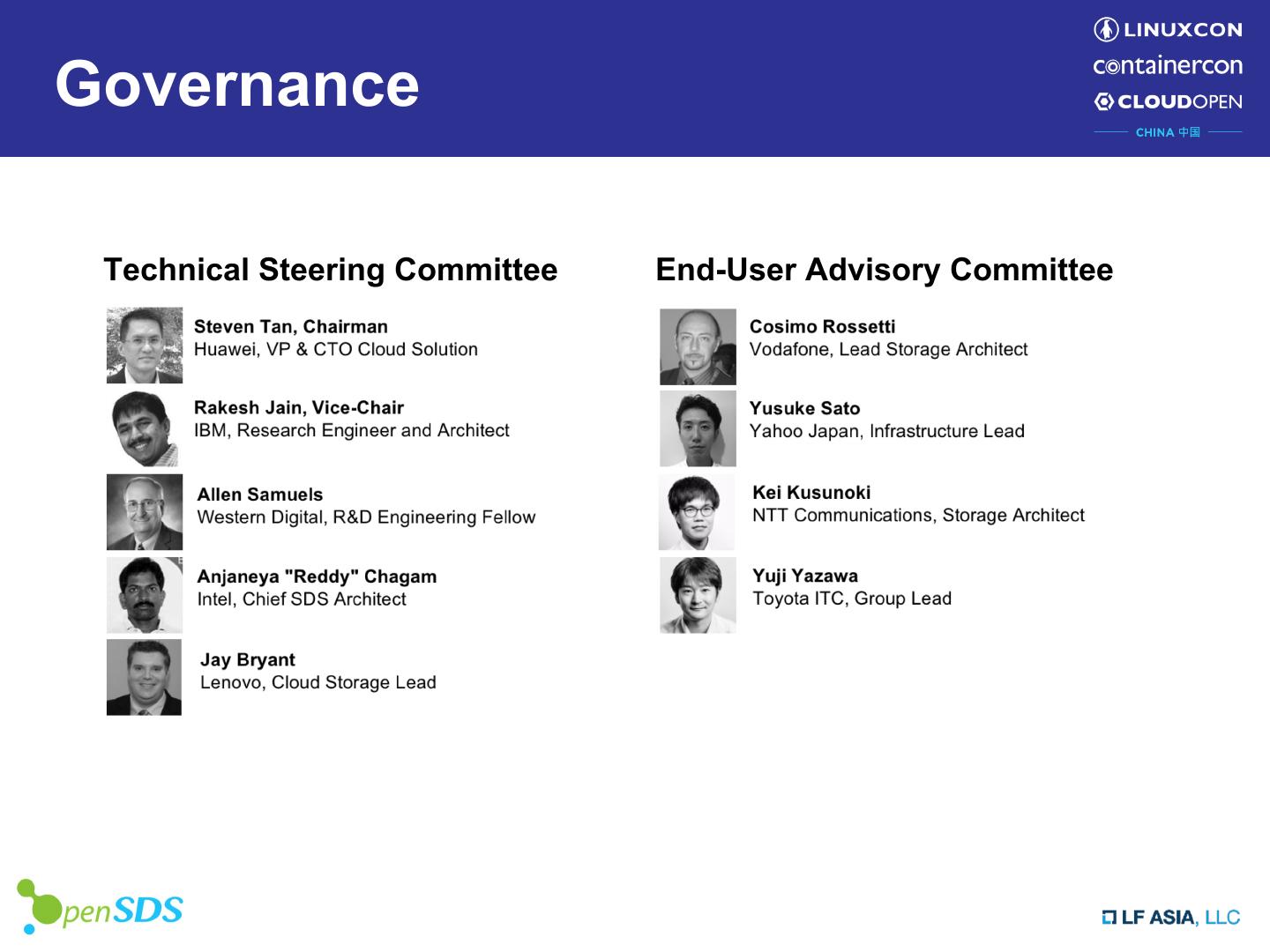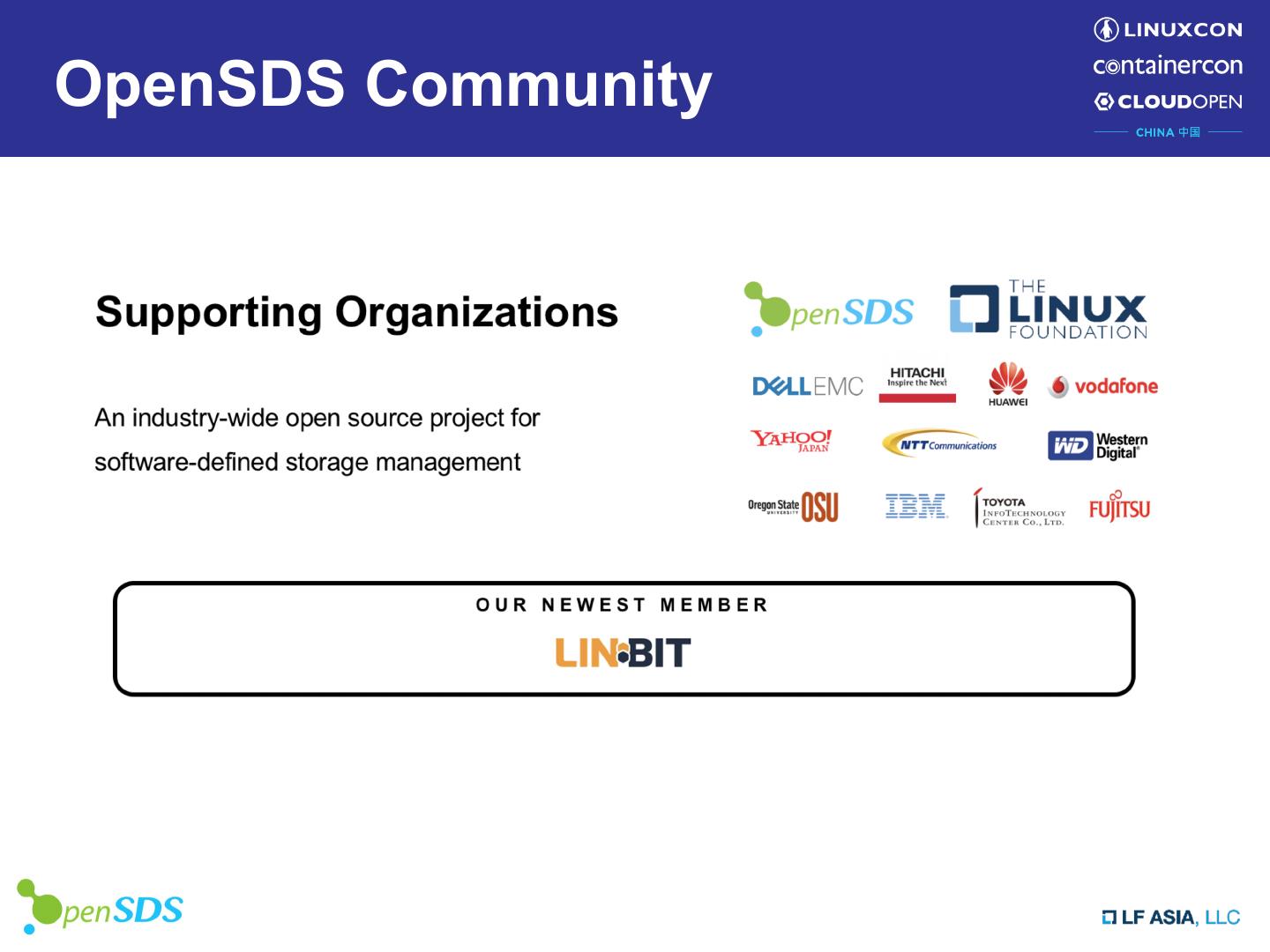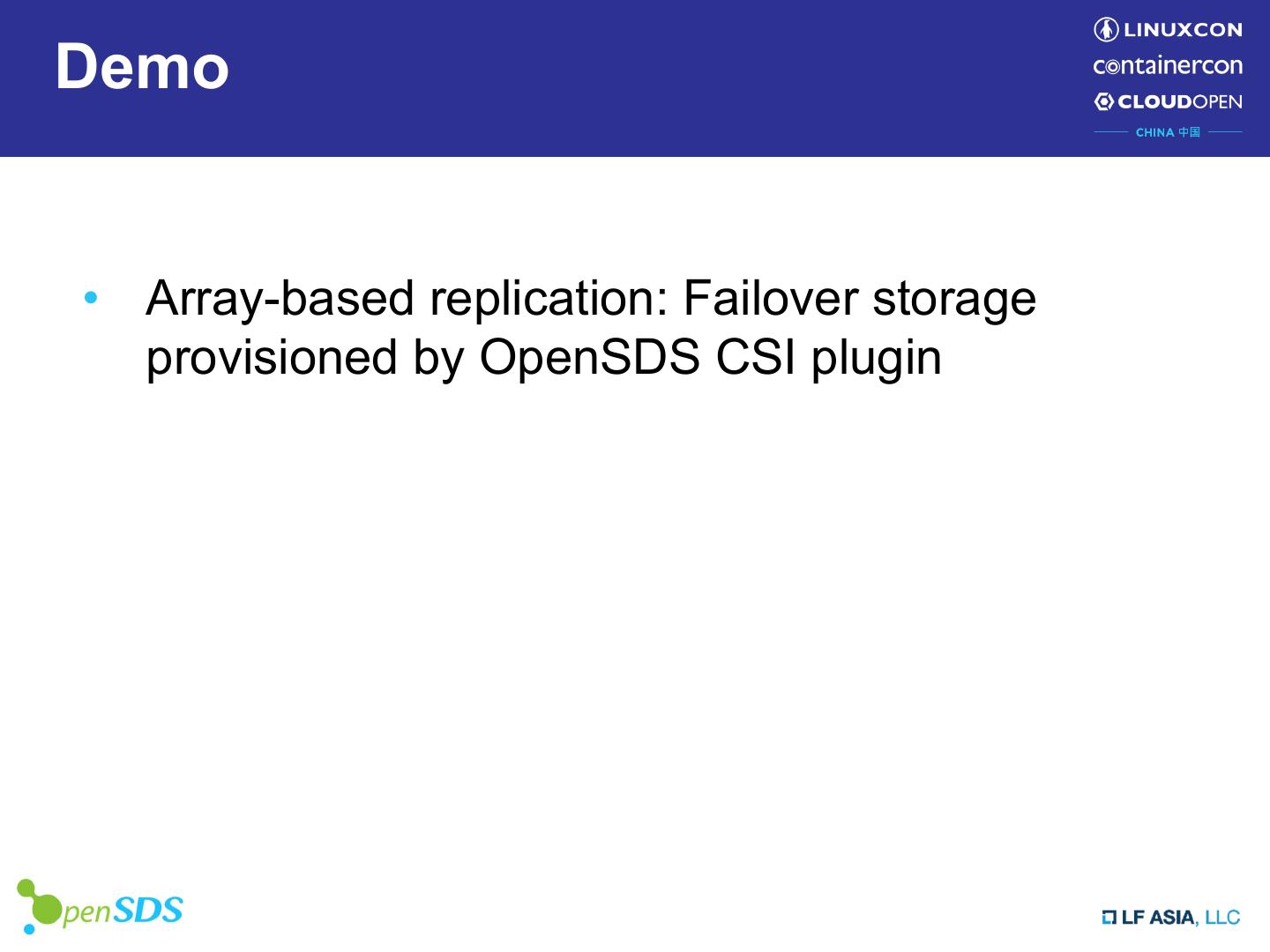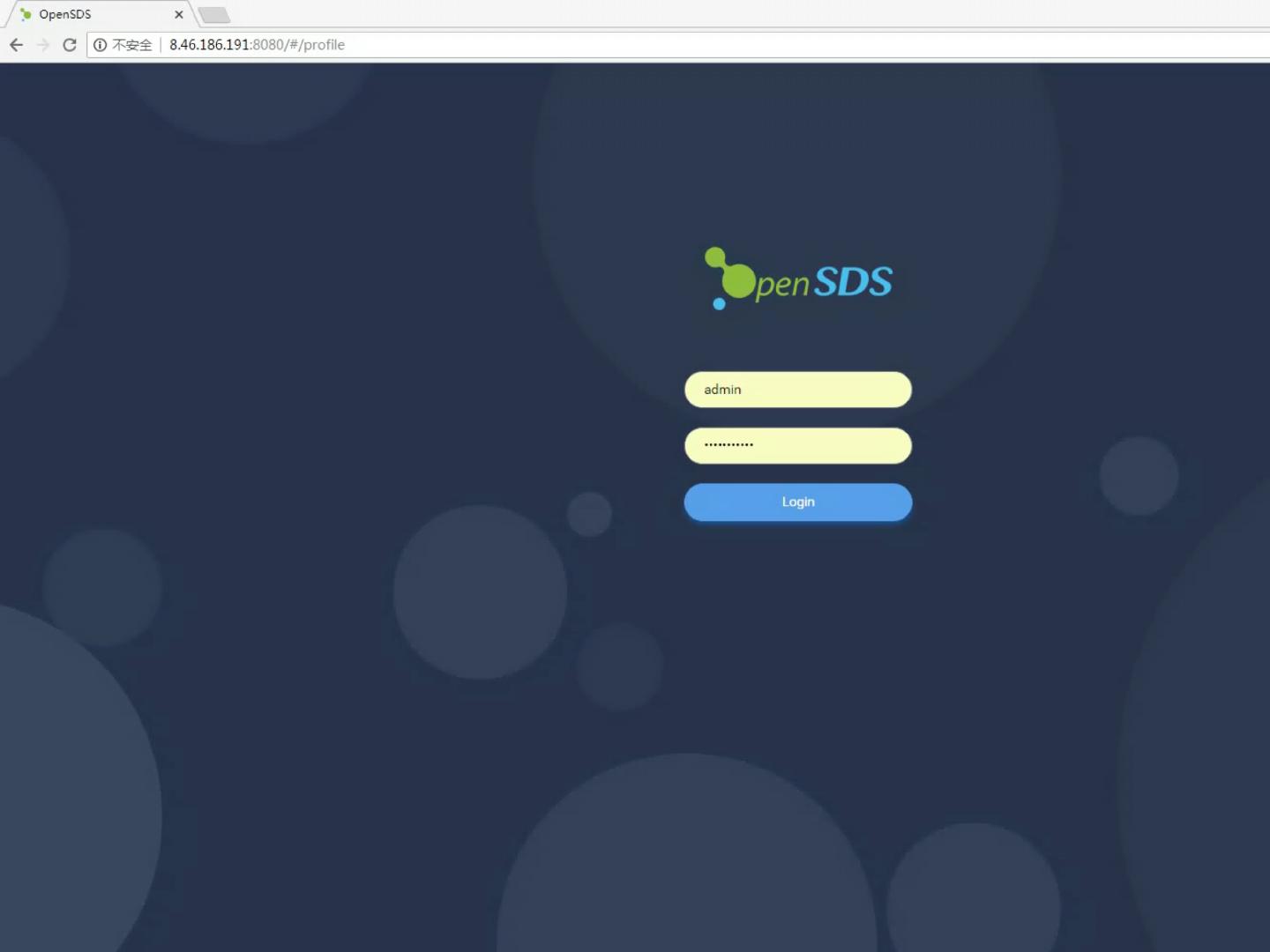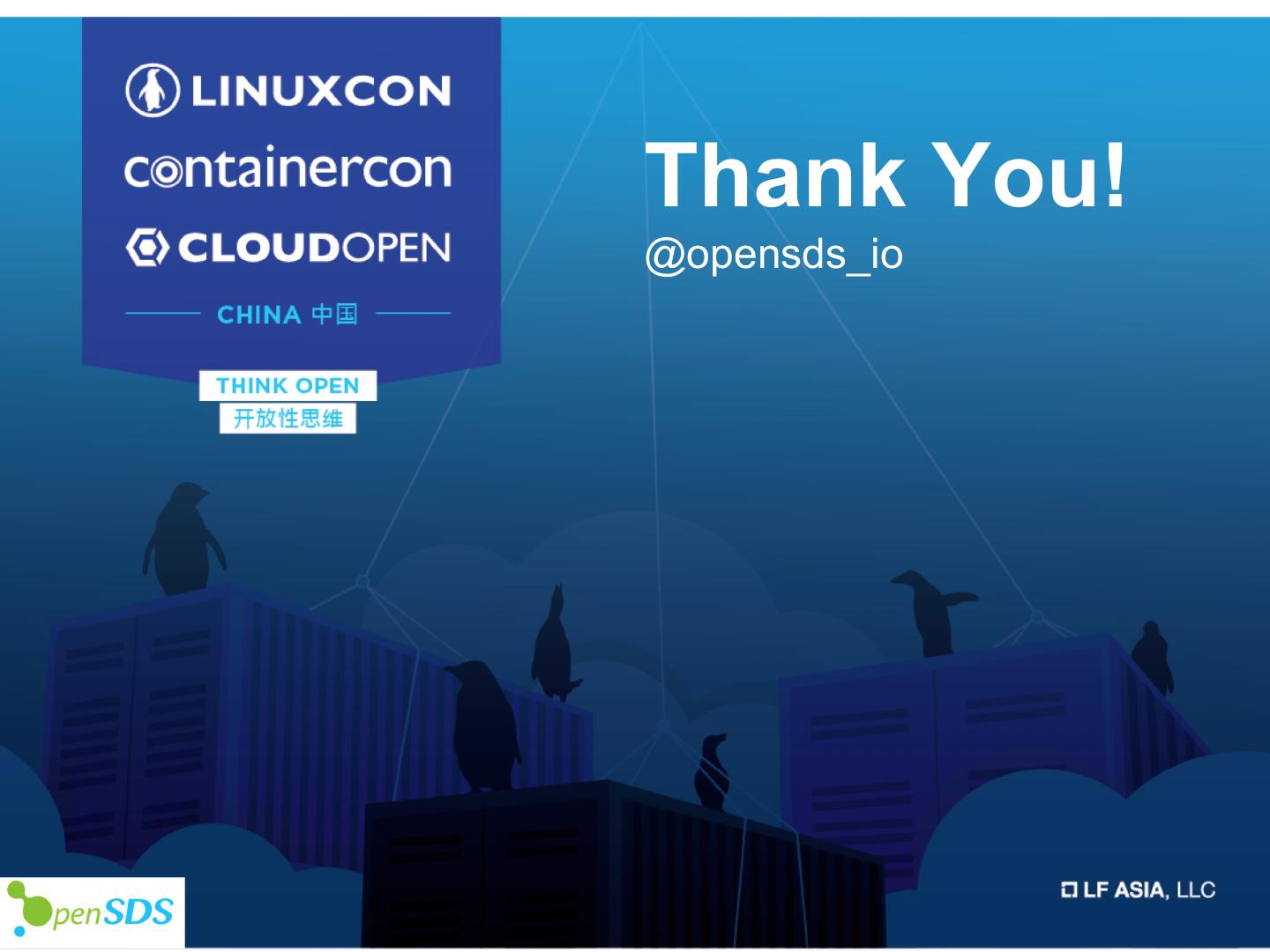- 快召唤伙伴们来围观吧
- 微博 QQ QQ空间 贴吧
- 文档嵌入链接
- <iframe src="https://www.slidestalk.com/u54/Disaster_Recovery_and_Data_Protection_for_Kubernetes_Persistent_Volumes?embed" frame border="0" width="640" height="360" scrolling="no" allowfullscreen="true">复制
- 微信扫一扫分享
Disaster Recovery and Data Prote
展开查看详情
1 .Disaster Recovery and Data Protection for Kubernetes Persistent Volumes Xing Yang, Principal Architect, Huawei
2 .Agenda • Kubernetes Persistent Volumes and CSI • Why OpenSDS for Kubernetes and CSI • OpenSDS Overview • Provision and Manage Persistent Volumes • Disaster Recovery for Persistent Volumes • Data Protection for Persistent Volumes • OpenSDS Roadmap for Aruba and Bali Release • OpenSDS Community • Demo
3 .Kubernetes Persistent Volumes • A PersistentVolume (PV) is a piece of storage in the cluster that has been provisioned by an administrator. • A PV can be provisioned statically or dynamically. • A PersistentVolumeClaim (PVC) is a request for storage by a user through a StorageClass. • A StorageClass provides a way for administrators to describe the “classes” of storage they offer. Different classes might map to different quality-of-service levels (or ”profiles”) in other storage systems. • A StorageClass needs to specify a provisioner for dynamic provisioning.
4 .Container Storage Interface (CSI) CSI is an industry standard defined to enable storage vendors to develop a plugin once and have it work across a number of container orchestration systems. Source: https://github.com/kubernetes/community/blob/master/contributors/ design-proposals/storage/container-storage-interface.md
5 .What Happens When Disaster Strikes Pod Pod Container Container Container Container Container Container Container Container PVC PVC PV PV
6 .Why OpenSDS for Kubernetes and CSI • Storage functionalities in Kubernetes and CSI are still evolving. • OpenSDS can provide additional storage functionalities such as data protection and disaster recovery. • Provide unified control for traditional cloud and cloud native environment. Pod Pod Container Container Container Container Container Container Container Container PVC PVC OpenSDS PV PV PV PV ✗ ✓
7 .OpenSDS Overview - Core Projects OpenSDS is an Open Source Project under the Linux Foundation
8 .OpenSDS Overview - Project Framework
9 .OpenSDS Overview - Architecture
10 .Provision and Manage Persistent Volumes using OpenSDS
11 .Profiles: Mapping OpenSDS Profile to K8S StorageClass
12 .Profiles: Policy Driven SPDM • OpenSDS profile is based on Swordfish specification. • The SNIA Swordfish™ specification helps to provide a unified approach for the management of storage and servers in hyperscale and cloud infrastructure environments, supported by multiple storage vendors. • An extension of the DMTF (Distributed Management Task Force) Redfish specification. • Redfish is designed by the DMTF’s Scalable Platforms Management Forum (SPMF) to create and publish an open industry standard specification and schema for management of scalable platform hardware. It is a RESTful interface over HTTPS in JSON format based on OData v4.
13 .Profiles: Definitions Data proection profile properties: - DataProrectionLoS Replication profile properties: - RecoveryGeographicObject - DataProrectionLoS - RecoveryPointObjective - RecoveryGeographicObjective - RecoveryTimeObjective - RecoveryPointObjective - ReplicaTypes - RecoveryTimeObjective Provisioning profile properties: - ConsistencyEnabled - ReplicaType - DataStorageLoS - ReplicaInfos - RecoveryTimeObjective - ReplicaUpdateMode - ProvisioningPolicy - ConsistencyEnabled - IsSpaceEfficient - ReplicationPeriod - IOConnectivityLoS - ReplicationBandwidth - AccessProtocol - HostBasedReplication - MaxIOPs - DiskDrain (how to handle the - MaxBWs Profile ordering of dependent write - Provisioning profile properties requests) - Replication profile properties - Snapshot policies - ReadBalancing - Custom properties - ResyncRate Snapshot profile properties: - Fencing (avoid split-brain) - Schedule - Date Migration profile properties: - Time - Schedule - Occurrence - Date (daily/weekly/monthly) - Time Custom profile property examples: - Retention - Occurrence - DiskType - By number of snapshots - Latency - Rules - By duration to retain a - Deduplication - Define what to migrate snapshot - PreConditions - Compression - …… - Specify in which condition to trigger a rule
14 .Profiles: Mapping Profiles to Capabilities Profile - Provisioning profile properties - Replication profile properties - Snapshot profile properties - Custom properties Capabilities Storage backend 1 Storage backend 1 Capabilities Storage backend 2 Storage backend 2 Selector Capabilities Storage backend 3 Storage backend 3
15 .Provision: StorageClass with Profile Parameter
16 .Provision: Running OpenSDS CSI Plugin • Create OpenSDS CSI plugin pods: kubectl create -f csi/server/deploy/kubernetes • Three pods can be found by kubectl get pod: Attacher Plugin Pod CSI OpenSDS Attacher CSI Plugin Node Plugin Pod Driver OpenSDS Registrar CSI Plugin Provisioner Plugin Pod CSI OpenSDS Provisioner CSI Plugin
17 .Provision: Using OpenSDS Volume • Create nginx application kubectl create -f csi/server/examples/kubernetes/nginx.yaml • An OpenSDS volume is mounted at /var/lib/www/html. docker exec -it <nginx container id> /bin/bash
18 .Disaster Recovery: Replication Profile • RecoveryTimeObjective • RecoveryPointObjective • RecoveryGeographicObjective • ReplicaType – Mirror • ReplicationUpdateMode – Sync, Async, Active, Adaptive • ConsistencyEnabled • ReplicationPeriod • ReplicationBandwidth
19 .Disaster Recovery: Replication Example ReplicationPVC.yaml apiVersion: v1 ReplicationSC.yaml kind: PersistentVolumeClaim apiVersion: storage.k8s.io/v1 metadata: kind: StorageClass name: opensds-csi-replication-pvc metadata: spec: name: opensds-csi-replication-sc accessModes: provisioner: csi-opensdsplugin - ReadWriteOnce parameters: resources: profile: replication-profile requests: enableReplication: “true” storage: 10Gi storageClassName: opensds-csi-replication-sc
20 .Disaster Recovery: Array-based Replication • Create source and target volume • Create replication on the arrays
21 .Disaster Recovery: Host-based Replication Source: http://docs.linbit.com/docs/users-guide-9.0/ • Create source and target volume • Attach volumes • Create replication on the hosts
22 .Disaster Recovery: Replication Functions Create Replication: osdsctl replication create <primary volume id> <secondary volume id> [flags] Flags: -d, --description string the description of created replication -h, --help help for create -n, --name string the name of created replication -p, --primary_driver_data string the primary replication driver data of created replication -m, --replication_mode string the replication mode of created replication, value can be sync/async -t, --replication_period int the replication period of created replication, the value must be greater than 0 -s, --secondary_driver_data string the secondary replication driver data of created replication Enable Replication: Disable Replication: osdsctl replication enable <replication id> osdsctl replication disable <replication id> Failover Replication: osdsctl replication failover <replication id> [flags] Flags: -a, --allow_attached_volume whether allow attached volume when failing over replication -h, --help help for failover -s, --secondary_backend_id string the secondary backend id of failover replication
23 .Data Protection: Snapshot Profile • Schedule – Date – Time – Occurrence (daily/weekly/monthly) • Retention – By number of snapshots – By duration to retain a snapshot • Topology – Where to upload snapshot 23
24 .Data Protection: Periodic Snapshotting • Take snapshots periodically based on snapshot profile • Upload snapshots to object store on-premise or in the cloud
25 .Data Protection: Restore • Create volume from snapshot • Restore volume from backup • Provision PV and bind with PVC
26 .OpenSDS Roadmap v0.14
27 .Governance Technical Steering Committee End-User Advisory Committee
28 .OpenSDS Community
29 .Demo • Array-based replication: Failover storage provisioned by OpenSDS CSI plugin




